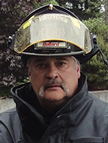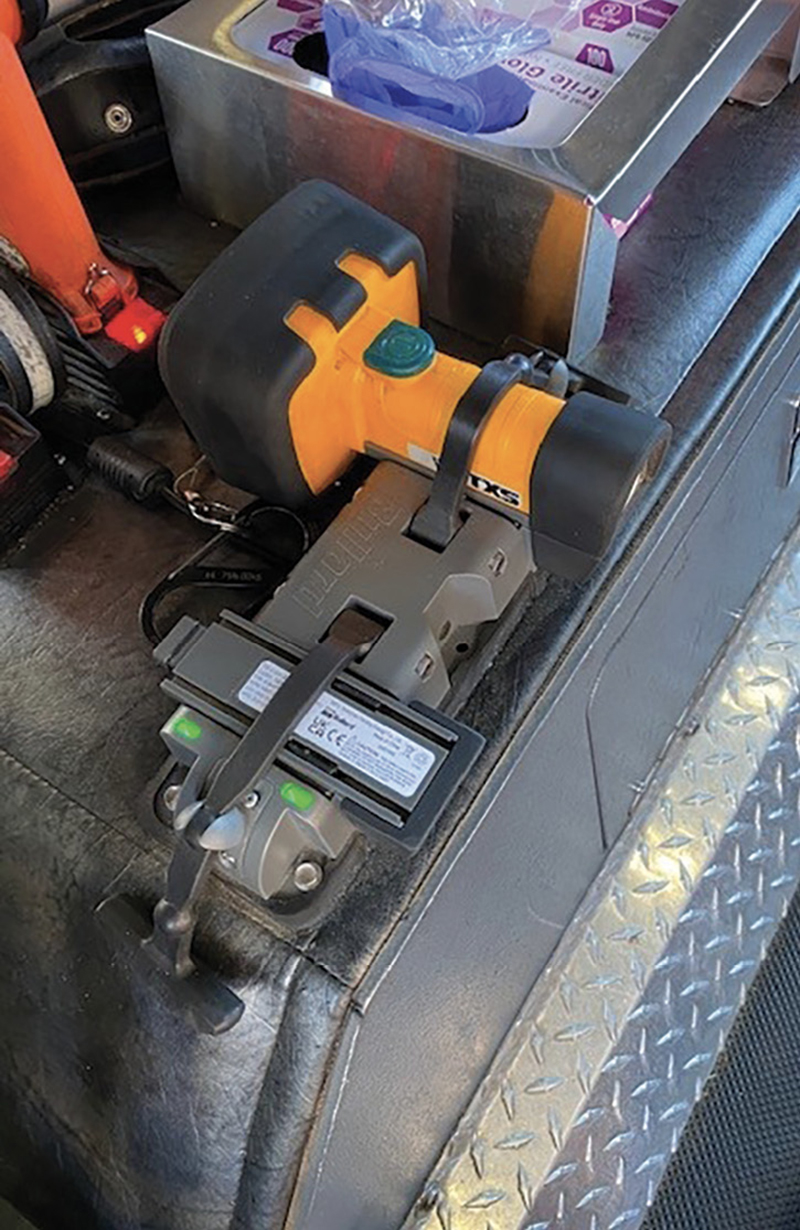Thermal Imaging Manfred Kihn
In my job, I get to communicate with firefighters from all around the world. This leads to some interesting conversations about how they operate, types of responses, and obviously thermal imaging.

In one conversation, it was explained to me that one department’s thermal imagers (TIs) are used by the lieutenants. The TIs are kept in the office in the firehouse and not carried on the apparatus. The TIs are taken only on house fires. Who am I to judge how a fire department operates and how it carries equipment?
TIs have come a long way in technology and pricing. Many years ago, some departments were lucky to have one. Some departments have TIs mounted in every riding position, while others have them mounted in the back for the crew or just in the front officer’s seat area.
I have challenged firefighters by saying, “Do you think that you can use a TI on every call that you go on”? That answer has prompted some debate. However, the fact that the TI comes from the apparatus regardless of if it gets used or not is a step in the right direction. The mentality that you do not need to have your TI needs to change. A TI is invaluable, and there are so many different applications for it.
Applications
Here are some applications outlined in National Fire Protection Association (NFPA) 1408, Standard for Training Fire Service Personnel in the Operation, Care, Use and Maintenance of Thermal Imagers: search and rescue, safety officer, explosions, aerial operations, USAR, airborne operations, overhaul, fire attack, size-up, wildland firefighting, hazmat, confined space, overheated machinery, accountability, incident command, ventilation, law enforcement, wildlife enforcement, RIC, exposure protection, electrical emergencies, aircraft emergencies, motor vehicle incidents, scene assessment, rehabilitation, EMS, fire/arson investigations, building construction, training, line placement, and the list can go on if you think outside the box.
Proper Installation
Ensure that your vehicle-mounted powerhouse chargers or in-vehicle chargers are compliant to NFPA 1901, Standard for Automotive Fire Apparatus. They can be wired to either a 12-volt DC or 120-volt AC. Make sure to follow the manufacturer’s instructions and use only qualified personnel for this installation. This method ensures that the TI is always fully charged for when you need it.
In some departments, the officer carries the TI; it is attached with a lanyard to his gear at the beginning of the shift and it stays there until the end of the shift. The spare battery is swapped for the next shift, ensuring the TI is always fully charged. Others will leave the TI in the charger until they arrive on scene and then remove it for use.
How long do your batteries last? What are the runtime specifications from the manufacturer? Batteries have improved greatly over the years, giving TIs a longer runtime. However, this is dependent on how old your TI and batteries are.
- Elevating Thermal Imagers to the Next Level
- Thermal Imaging and Image Interpretation
- New Changes to NFPA Thermal Imaging Technology
- Handheld Thermal Imaging Cameras Continue To Be Popular Among Fire Departments
- Thermal Imaging: Thermal Imagers Not Just for the Crews
- Thermal Imaging: Understanding Your TI Technology
- Where Can’t I Use a Thermal Imaging Camera
- The Outdoor Effects Emissivity Has on Thermal Imaging
- Using Thermal Imaging During Water Rescue
- Let’s Talk Thermal Imaging

1 A thermal imager and a spare battery mounted on an engine doghouse for rear crew accessibility. [Photos courtesy of the Shelby (NC) Fire Department.]
Here is a service tip: When you come on shift and are conducting your vehicle and equipment check, pull out your TI, turn it on, and leave it on your seat. Unless your TI has a sleep mode feature, it should still be operating when you have completed all the checks around 30 to 40 minutes later. If it is not operating, your battery has gone dead. It’s a good thing you have discovered that before your next emergency.
Some TIs have been mounted inside compartments outside of the apparatus, which means more steps for the crews to take, which can delay them during their response. I highly recommend handheld portable equipment—i.e., flashlights, portable radios, gas detectors, and TIs—be mounted inside an apparatus cab to make them readily available.

2 A thermal imager mounted in front at the officer’s riding position.
I have even seen a TI and a spare battery sliding around in fishing tackle-type plastic cases on the floor of the apparatus. The battery was dead, and the spare battery lasted for about 10 minutes—not particularly useful. We replace the batteries in our portable radios and flashlights often enough, but we seem to overlook replacing the batteries in our TI.
A TI is an extremely valuable tool; keep it in sight and readily accessible in the apparatus. This will help as a reminder to take it and use it for its many practical applications.
Manfred Kihn is a 19-year veteran of the fire service, having served as an ambulance officer, emergency services specialist, firefighter, captain, and fire chief. He has been a member of Bullard’s Emergency Responder team since 2005 and is the company’s fire training specialist for thermal imaging technology. He is certified through the Law Enforcement Thermographers’ Association (LETA) as a thermal imaging instructor and is a recipient of the Ontario Medal for Firefighters Bravery. If you have questions about thermal imaging, you can e-mail him at manfred_kihn@bullard.com.

